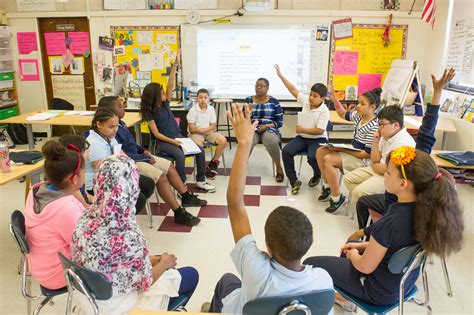Icebreaker activities: Energize the participants from the start
Icebreaker activities are an essential component of any workshop or training session. These activities are designed to break the ice and create a positive and engaging atmosphere right from the start. They are particularly useful when participants are meeting for the first time, as they help create a sense of camaraderie and build connections among the group. Icebreaker activities can range from simple games to thought-provoking exercises, all aimed at energizing the participants and setting the tone for a productive and interactive session.
One popular icebreaker activity is the “Two Truths and a Lie” game. In this activity, each participant takes turns sharing two true statements and one false statement about themselves. The rest of the group then tries to guess which statement is the lie. This game not only helps participants get to know each other better but also encourages active participation and sharing. It sparks conversations and can lead to further discussions about shared interests and experiences.
Another effective icebreaker activity is the “Human Scavenger Hunt.” In this activity, participants are given a list of characteristics or experiences, such as “Find someone who has traveled to more than five countries” or “Find someone who plays a musical instrument.” Participants then have to find someone in the group who matches each item on the list. This activity gets participants moving around, talking to each other, and discovering commonalities. It promotes experiential learning and skill development, as participants actively seek out others who possess certain attributes.
List of Icebreaker Activities:
- “Two Truths and a Lie” game
- “Human Scavenger Hunt”
- “Name and Fun Fact”
- “The Marshmallow Challenge”
- “Would You Rather?”
Table: Pros and Cons of Icebreaker Activities
| Pros | Cons |
|---|---|
| Icebreakers create a positive and engaging atmosphere. | Some participants may feel uncomfortable or embarrassed during certain activities. |
| Icebreakers help participants get to know each other better. | Not all icebreaker activities may be suitable for all types of workshops or training sessions. |
| Icebreakers promote collaboration and teamwork. | Icebreakers should be well-planned and tailored to the specific group and objectives of the session. |
| Icebreakers can help uncover shared interests and experiences. | Icebreakers should be time-efficient and not overshadow the main content of the workshop or training session. |
Group discussions: Encourage active participation and sharing
Group discussions are a valuable tool for facilitating active participation and sharing among participants in various settings. They offer an opportunity for individuals to express their thoughts, ideas, and perspectives, and engage in meaningful conversations with others. By encouraging interaction and collaboration, group discussions can enhance the learning experience and promote deeper understanding of the topic at hand.
One of the key benefits of group discussions is that they enable participants to actively contribute to the conversation. Unlike traditional lecture-based approaches, where information is presented in a one-way manner, group discussions encourage individuals to express their opinions, ask questions, and engage in critical thinking. This active participation helps to foster a sense of ownership and engagement, as participants feel that their voices are heard and valued.
In addition, group discussions provide a platform for sharing different perspectives and experiences. When individuals come together and exchange ideas, they are exposed to diverse viewpoints and insights. This not only broadens their understanding of the topic, but also encourages them to think more critically and consider alternative viewpoints. By listening to others and engaging in respectful debates, participants can challenge their own assumptions and expand their knowledge.
- Active participation
- Sharing ideas
- Collaboration
- Critical thinking
- Diverse perspectives
- Knowledge expansion
| Benefits of Group Discussions | |
|---|---|
| Active participation | Engages participants and encourages contribution |
| Sharing ideas | Provides a platform for individuals to express their thoughts and insights |
| Collaboration | Facilitates cooperation and teamwork among participants |
| Critical thinking | Promotes the exploration of different perspectives and encourages analytical thinking |
| Diverse perspectives | Exposes participants to a range of viewpoints and experiences |
| Knowledge expansion | Allows individuals to learn from each other and gain new insights |
Role-playing exercises: Spark creativity and enhance empathy
Role-playing exercises are a powerful tool for sparking creativity and enhancing empathy in various settings. Whether used in the classroom, workplace, or even therapy sessions, role-playing allows participants to step into different roles and explore different perspectives. This immersive experience not only stimulates creative thinking but also helps individuals develop a deeper understanding and appreciation for others’ experiences and emotions.
One of the key benefits of role-playing exercises is their ability to ignite creativity. When participants are given the opportunity to step outside of their usual roles and adopt new perspectives, it opens up a world of possibilities. By immersing themselves in a different character or situation, individuals are encouraged to think outside the box and explore alternative solutions and ideas. This creative thinking can lead to innovative problem-solving and fresh approaches to challenges.
Moreover, role-playing exercises also foster empathy among participants. By assuming the roles of others, individuals gain insight into their feelings, motivations, and struggles. This experiential learning allows for a deeper understanding and connection with others, as it helps individuals recognize and validate different perspectives. Empathy is a valuable skill in today’s diverse society, enabling individuals to build meaningful relationships, communicate effectively, and navigate social dynamics with compassion and understanding.
- Increase creativity
- Enhance problem-solving skills
- Stimulate fresh ideas and perspectives
- Promote understanding and empathy
- Strengthen communication and social skills
| Role-playing exercises: Spark creativity and enhance empathy |
|---|
| Benefits |
| Increase creativity |
| Enhance problem-solving skills |
| Stimulate fresh ideas and perspectives |
| Promote understanding and empathy |
| Strengthen communication and social skills |
Hands-on activities: Promote experiential learning and skill development
Hands-on activities are an effective way to promote experiential learning and skill development in workshops and training sessions. These activities engage participants in practical exercises that allow them to apply newly acquired knowledge and skills in a real-life setting. By actively participating in hands-on activities, participants can gain a deeper understanding of the subject matter and enhance their problem-solving abilities. Additionally, these activities encourage collaboration, creativity, and critical thinking, making the learning process more enjoyable and impactful.
One of the benefits of hands-on activities is that they provide a safe environment for participants to practice and make mistakes. Through trial and error, participants can learn from their errors and adjust their approaches to achieve better results. This experiential learning approach not only reinforces theoretical concepts but also enables participants to develop their confidence and proficiency in applying newly acquired skills.
Furthermore, hands-on activities foster skill development by allowing participants to engage in practical tasks that simulate real-life scenarios. This enables them to develop key competencies and transferable skills that can be directly applied in their personal and professional lives. Whether it is through role-playing exercises or problem-solving tasks, hands-on activities provide participants with the opportunity to enhance their communication skills, leadership abilities, teamwork, and decision-making capabilities.
Here is a list of hands-on activities that can be incorporated into workshops and training sessions:
- Simulation exercises
- Case studies
- Group projects
- Hands-on demonstrations
- Practical workshops
- Field trips
By integrating hands-on activities into workshops and training sessions, facilitators can create an engaging and interactive learning environment. These activities not only facilitate knowledge retention but also provide participants with the opportunity to apply their learning in a practical context. Whether it is through problem-solving challenges, group discussions, or interactive simulations, hands-on activities play a crucial role in promoting experiential learning and skill development.
Gamification elements: Make workshops more engaging and competitive
Workshops are a valuable learning tool that allow participants to enhance their skills and knowledge in a hands-on environment. However, sometimes these workshops can become monotonous and fail to engage the participants fully. This is where gamification elements come in.Gamification is the process of incorporating game-like features and mechanics into non-game contexts to make them more enjoyable and interactive. In the world of workshops, gamification can bring a whole new level of excitement and competition, making the learning experience more engaging and effective.
One key element of gamification in workshops is the use of leaderboards. By keeping track of participants’ progress and ranking them based on their performance, leaderboards introduce a sense of competition and drive to excel. Knowing where they stand in comparison to others motivates participants to give their best and strive to be at the top. This healthy competition fosters engagement and encourages active participation throughout the workshop.
Another effective gamification element is the incorporation of badges and rewards. Similar to achievements in video games, badges and rewards acknowledge participants’ accomplishments and provide them with a sense of accomplishment and satisfaction. These tangible symbols of achievement not only boost participants’ self-esteem but also create a friendly competitive atmosphere. Participants will be motivated to earn as many badges and rewards as possible, further enhancing their engagement and commitment to the workshop.
Additionally, team challenges can add an exciting dimension to workshops. By dividing participants into teams and presenting them with specific tasks or missions, workshops become more collaborative and interactive. Participants have to work together, share ideas, and strategize to overcome challenges. This not only fosters teamwork and cooperation but also injects a sense of excitement and competition among the teams. Participants will be driven to outperform other teams, resulting in a more dynamic and engaging learning environment.
Benefits of Gamification in Workshops
Gamification elements in workshops offer various benefits that traditional methods may lack. Firstly, gamification increases engagement and motivation among participants. The incorporation of game-like features and mechanics captures participants’ attention and keeps them actively involved throughout the workshop. This leads to a deeper level of learning and retention of information.
Secondly, gamification elements introduce competition into the workshop environment. Competition has been proven to be a powerful motivator that stimulates participants to push their boundaries and strive for excellence. This competitive spirit not only enhances participants’ performance but also enables them to unleash their full potential.
Lastly, gamification in workshops promotes active learning. Instead of passively absorbing information, participants become actively engaged in the learning process. They are required to think critically, solve problems, and make strategic decisions to progress in the gamified workshop. This hands-on approach fosters experiential learning, where participants can apply their newly acquired knowledge and skills in a practical context.
| Benefits of Gamification: | Examples of Gamification Elements: |
|---|---|
| 1. Increased engagement and motivation | 1. Leaderboards |
| 2. Enhanced competition and performance | 2. Badges and rewards |
| 3. Active learning and application of knowledge | 3. Team challenges |
In conclusion, incorporating gamification elements into workshops can significantly enhance their engagement and competitiveness. Leaderboards, badges and rewards, and team challenges are just a few examples of gamification elements that can transform a regular workshop into an exciting and interactive learning experience. By tapping into the motivational power of games, workshops can become more effective in delivering knowledge and skills, driving participants to achieve their best.
Brainstorming sessions: Foster collaboration and generate innovative ideas
Brainstorming sessions are a powerful tool for fostering collaboration and generating innovative ideas. The purpose of these sessions is to gather a group of individuals together to collectively brainstorm and generate new ideas and solutions to a specific problem or challenge. By creating an environment that encourages open and free thinking, brainstorming sessions can help to unlock creativity and tap into the collective intelligence of a group.
One of the key benefits of brainstorming sessions is that they promote collaboration among participants. When individuals come together to brainstorm, they have the opportunity to build upon each other’s ideas and perspectives. This collaborative approach helps to generate a diverse range of ideas that may not have been possible if individuals were working alone. By creating a safe and non-judgmental space, participants feel more comfortable sharing their thoughts and ideas, leading to a richer and more varied pool of potential solutions.
In order to facilitate effective brainstorming sessions, it is important to establish some ground rules. These rules should encourage active participation and ensure that all ideas are given equal consideration. For example, it is important to emphasize the importance of listening to others and not interrupting while someone is sharing their idea. Additionally, participants should be encouraged to build upon each other’s ideas rather than immediately criticizing or dismissing them. By creating a supportive and inclusive environment, participants will feel more comfortable contributing their ideas, leading to a more fruitful brainstorming session.
To further enhance the brainstorming process, facilitators can utilize various techniques and tools. One popular technique is mind mapping, which involves visually organizing ideas and their relationships. This can help to spark new connections and associations, leading to innovative ideas. Another technique is the use of prompts or challenges to guide the brainstorming process. By providing a specific problem or question to focus on, participants can direct their thinking and generate more targeted ideas. Additionally, facilitators can incorporate gamification elements, such as timed rounds or friendly competitions, to make the session more engaging and competitive.
In conclusion, brainstorming sessions are a valuable tool for fostering collaboration and generating innovative ideas. By creating an environment that encourages open and free thinking, participants can tap into their collective intelligence and come up with creative solutions to problems or challenges. With the right techniques and facilitation, brainstorming sessions can be a powerful tool for organizations and teams looking to generate fresh ideas and drive innovation.
Interactive simulations: Provide real-life scenarios for practical learning
Interactive simulations are an effective way to provide practical learning experiences by offering real-life scenarios. These simulations engage the participants in immersive activities that replicate real-world situations, allowing them to apply their knowledge and skills in a safe environment. By integrating interactive elements, such as decision-making tasks and problem-solving challenges, simulations offer a hands-on approach to learning that enhances understanding and retention.
One of the key benefits of interactive simulations is that they promote active learning. Participants are actively involved in the simulation, making decisions, and facing the consequences of their choices. This hands-on approach increases engagement and helps participants develop critical thinking skills. Through the scenarios presented in simulations, participants can apply theoretical knowledge, explore different perspectives, and practice problem-solving techniques.
In addition to promoting active learning, interactive simulations also foster collaboration among participants. Many simulations involve team-based activities, where participants work together to accomplish a common goal. This collaborative nature encourages communication, cooperation, and the sharing of ideas. Participants can learn from each other’s experiences, gain different perspectives, and develop essential teamwork skills that are highly valuable in real-life professional settings.
- Enhance critical thinking skills.
- Promote active learning and engagement.
- Provide a safe environment for practical application.
- Offer collaborative learning opportunities.
- Develop problem-solving abilities.
| Key advantages of interactive simulations: |
|---|
| Engage participants in hands-on learning. |
| Replicate real-life scenarios. |
| Offer opportunities for decision-making and problem-solving. |
| Promote teamwork and collaboration. |
| Enhance critical thinking and decision-making skills. |
By providing realistic scenarios, interactive simulations bridge the gap between theoretical knowledge and practical application. They allow participants to test their understanding, apply their skills, and learn from their mistakes, all in a simulated environment. This practical learning approach not only enhances participants’ confidence but also prepares them to face real-world challenges with competence and readiness.
In conclusion, interactive simulations are an effective tool for providing practical learning experiences through real-life scenarios. They offer numerous benefits, including enhanced critical thinking skills, active engagement, collaborative learning opportunities, and the development of problem-solving abilities. Incorporating interactive simulations into workshops and training sessions can significantly enhance the learning outcomes and ensure participants have the necessary skills to succeed in their respective fields.
Frequently Asked Questions
Question: Why are icebreaker activities important in workshops?
Icebreaker activities are important in workshops because they help to energize participants and create a positive and engaging atmosphere from the start. They can break the ice between participants who may not know each other and help to establish a sense of camaraderie and teamwork.
Question: How can group discussions encourage active participation and sharing?
Group discussions encourage active participation and sharing by giving every participant a chance to voice their opinions, thoughts, and ideas. They provide a platform for individuals to contribute their unique perspectives and expertise, fostering a collaborative environment where everyone feels valued and heard.
Question: How do role-playing exercises spark creativity and enhance empathy?
Role-playing exercises spark creativity by encouraging participants to step into different roles and perspectives. By embodying different characters or scenarios, participants are able to think outside the box and find innovative solutions. Additionally, role-playing exercises enhance empathy by allowing participants to empathize with different perspectives, opinions, and experiences.
Question: What are the benefits of hands-on activities in workshops?
Hands-on activities in workshops promote experiential learning and skill development. Participants learn by actively engaging in tasks and exercises rather than just passively listening. This hands-on approach helps to embed knowledge and skills more deeply, ensuring participants can apply what they have learned to real-world situations.
Question: How can gamification elements make workshops more engaging and competitive?
Gamification elements, such as leaderboards, badges, or rewards, make workshops more engaging and competitive by adding an element of fun and challenge. Participants are motivated to actively participate and excel in activities to earn rewards or achieve a higher rank on a leaderboard. This enhances the overall workshop experience and encourages participants to push themselves further.
Question: How do brainstorming sessions foster collaboration and generate innovative ideas?
Brainstorming sessions foster collaboration by creating a space where participants can freely share their ideas and build upon each other’s contributions. They encourage open communication and allow participants to collectively brainstorm and problem-solve, leading to the generation of innovative ideas and solutions that may not have been possible individually.
Question: How do interactive simulations provide real-life scenarios for practical learning?
Interactive simulations provide real-life scenarios for practical learning by simulating realistic situations that participants may encounter in their professional or personal lives. They allow participants to actively engage in the simulated scenario, make decisions, and experience the consequences of their actions in a controlled environment. This hands-on experience enhances the learning process and prepares participants for real-world challenges.





